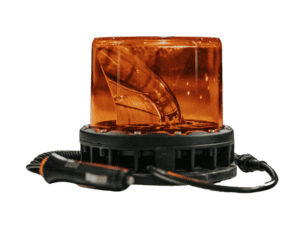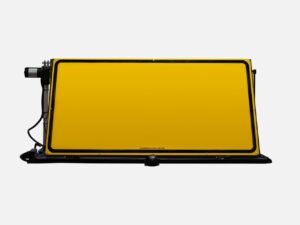Shop Menu
🚀 5% OFF Your First Order. Use Code FIRSTORDER5 🚀
Pilot Vehicle Signs
Our pilot vehicle signs fit most vehicles and make it easy to identify escort vehicles on the road. Plus, all of our signs meet Australian safety regulations. Shop now to keep your drivers and surrounding motorists safe.
Shop Australia’s No.1 Pilot Vehicle Signs
-
 Motorised Pilot Vehicle Sign$2,302.30 (incl. tax)
Motorised Pilot Vehicle Sign$2,302.30 (incl. tax) -
 Manual Pilot Vehicle Sign$1,227.05 – $1,530.65 (incl. tax)
Manual Pilot Vehicle Sign$1,227.05 – $1,530.65 (incl. tax)
Frequently Asked Questions
The Heavy Vehicle National Law (HVNL) gives the following definitions for a pilot vehicle and escort vehicle:
• A pilot vehicle is a motor vehicle that accompanies an oversize vehicle to warn other road users of the oversize vehicle’s presence.
• An escort vehicle is a pilot vehicle that is driven by a Police officer or another person authorised to direct traffic under an Australian road law.
An oversize overmass vehicle is a vehicle that alone, or with its load, exceeds the prescribed limits of weight, height, and width that are considered safe for public roads. It cannot be broken down into smaller, lighter units. Examples include prime movers with extendable trailers or low loaders. Road trains, B-doubles, and vehicles carrying freight containers are not considered oversize overmass vehicles.
• See the Oversize Overmass (OSOM) vehicles fact sheet (PDF, 471KB) for more information.
Each state and territory in Australia has its own rules for oversize and overmass loads, including pilot and escort requirements. This information sheet provides a brief overview of these requirements across all jurisdictions.
The Heavy Vehicle (Mass, Dimension and Loading) National Regulation outlines the operational requirements for pilot vehicles. These requirements include the use of warning lights, warning signs, headlights, positioning of vehicles, and communication.
1. A pilot vehicle must have a warning sign attached to its roof.
3. A pilot vehicle must have a warning light attached either above or below the warning sign; or at each side of the warning sign.
1. The warning sign must meet Australian Standards
2. The warning sign must have the wording “OVERSIZE LOAD AHEAD” clearly visible from the front and rear.
3. The warning sign must not be leaning more than 200mm from top to bottom.
1. The warning lights must be ADR compliant.
2. The warning lights must be clearly visible at a distance of 500m in all directions.
3. When switched on, they must emit a yellow coloured light of rotating and flashing effect; and flash between 120 and 200 times a minute.
4. Have a power of at least 24W (LED technology); or 55W (another technology)
5. A warning light must not be a strobe light.
1. If a pilot vehicle accompanies a class 1 heavy vehicle, it must travel behind the heavy vehicle on a divided road and in front of the heavy vehicle on a road that is not divided.
2. When two pilot vehicles accompany a class 1 heavy vehicle, one pilot vehicle must lead the vehicle and the other must follow it.
3. Pilot vehicles should stay far enough away from heavy vehicles to warn other drivers. The distance should be based on traffic speed, weather, visibility, and other conditions.
In some cases, yes. The HVNL applies to heavy vehicle transport activities on private roads that are accessible to the public. However, the NHVR does not have the authority to negotiate access to private roads that are not accessible to the public. Under the HVNL, private road managers remain responsible for managing access to their own properties.
A heavy vehicle in Australia is defined as a motor vehicle or trailer that has a Gross Vehicle Mass greater than 4.5 tonnes.
A class 1 heavy vehicle in Australia is a vehicle that exceeds the mass or dimension limits set by the Heavy Vehicle National Law (HVNL). These vehicles are considered to be restricted access vehicles (RAVs) and require a permit or notice to operate on public roads. Common class 1 heavy vehicles include agricultural vehicles, oversize overmass vehicles and special purpose vehicles.
• It is important to note that the regulations for restricted access vehicles (RAVs) vary from state to state. Drivers should always check with the relevant authorities before operating a restricted access vehicle.
• See the National Class 1 Agricultural Vehicle and Combination Mass and Dimension Exemption Notice Operator's Guide for more information on agricultural vehicles.
If you have any questions regarding this guidance you can send us a message or call us on 1800 624 088.




